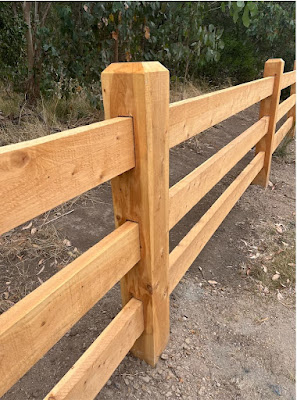How to Choose the Right Material for Post and Rail Fencing?
When it comes to adding a touch of rustic charm and security to your property, post and rail fencing is a fantastic choice. Not only does it define your space, but it also provides a timeless aesthetic. However, one crucial decision you'll need to make is selecting the right material for your post and rail fence.
In this blog, we'll explore the various options available and help you make an informed choice.
Why Post and Rail Fencing?
Before we dive into the nitty-gritty of selecting materials, let's quickly discuss why post and rail fencing Sydney is such a popular choice.
- Classic Aesthetics: Post and rail fences have a timeless, rustic appearance that complements a variety of properties, from country homes to suburban dwellings.
- Affordability: This type of fencing is cost-effective compared to many other fencing styles, making it an excellent choice for those on a budget.
- Easy Installation: Building a post and rail fence is a DIY-friendly project. Even if you choose to hire a professional, the installation process is relatively straightforward.
- Durability: When constructed with the right materials, post and rail fences can last for many years with minimal maintenance.
Now, let's explore the materials you can choose for your post and rail fence.
1. Wood
Post and rail fencing made from wood is a popular choice due to its natural beauty and versatility. Wood offers a rustic and traditional look that can blend seamlessly with any landscape. Cedar, pine, and oak are commonly used types of wood for post and rail fencing.
Cedar is an excellent choice as it is naturally resistant to rot and insect damage. It also has a pleasing aroma and can be left unfinished for a more natural appearance. Pine is another popular option as it is more affordable than cedar but still provides an attractive finish. Oak, known for its strength and durability, is a great choice for areas with high wind or harsh weather conditions.
When choosing wood for your post and rail fencing, consider the maintenance requirements. Wood fences require regular sealing or painting to protect them from moisture and UV rays. However, with proper maintenance, a wooden post and rail fence can last for many years.
2. Vinyl
If you're looking for a low-maintenance option, vinyl post and rail fencing Sydney might be the right choice for you. Vinyl is a synthetic material that mimics the appearance of wood but eliminates the need for regular maintenance. It is highly durable, resistant to rot, and can withstand harsh weather conditions.
One of the advantages of vinyl fencing is its ease of installation. The interlocking panels make it a DIY-friendly option. Additionally, vinyl fencing is available in various colours, allowing you to customise the look of your fence to match your preferences and surroundings.
3. Metal
For those seeking a more modern and durable option, metal post and rail fencing is worth considering. Metal fencing, such as aluminium or steel, offers a sleek and contemporary look that can add a touch of elegance to any property.
Aluminium fencing is lightweight, resistant to rust and corrosion, and requires minimal maintenance. Steel fencing, on the other hand, is stronger and provides enhanced security. Both options offer longevity and can withstand harsh weather conditions.
However, it's important to note that metal fencing can be more expensive compared to other materials, and the installation process may require professional assistance.
4. Composite
If you're looking for a material that combines the best qualities of wood and vinyl, composite post and rail fencing might be the perfect choice. Composite fencing is made from a blend of wood fibres and recycled plastic, resulting in a durable and environmentally friendly option.
Composite fencing closely resembles traditional wood fencing but doesn't require the same level of maintenance. It is resistant to rot, insects, and fading, making it an excellent choice for those seeking a long-lasting and hassle-free fence.
Considerations for Material Selection
When choosing the right material for your post and rail fencing, consider the following factors:
- Aesthetics: Select a material that complements the style of your property and enhances its overall appearance.
- Durability: Assess the material's resistance to rot, weather conditions, and pests to ensure its longevity.
- Maintenance: Decide how much time and effort you are willing to invest in maintaining your fence.
- Budget: Determine your budget and explore different material options that align with your financial resources.
- Functionality: Consider the purpose of your fence, whether it's for privacy, security, or simply marking boundaries.
Selecting the right material for your post and rail fencing Sydney project is essential to achieve the desired look, durability, and functionality. Wood, vinyl, metal, and composite are all viable options, each with its advantages and considerations.
By understanding the characteristics of these materials and evaluating your specific requirements, you can confidently make an informed decision. Now that you have this knowledge, you can proceed with choosing the perfect material for your post and rail fencing project!




Comments
Post a Comment